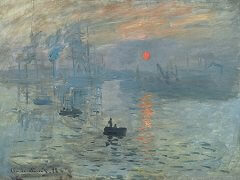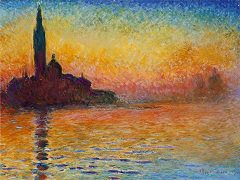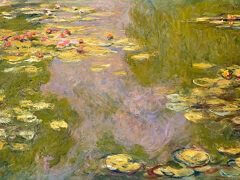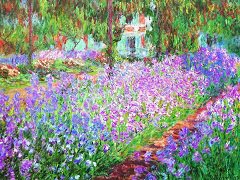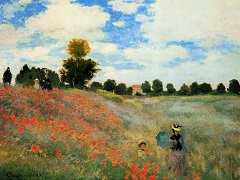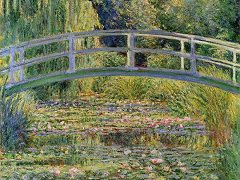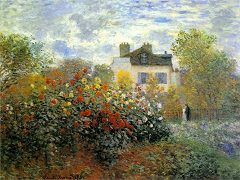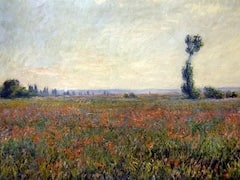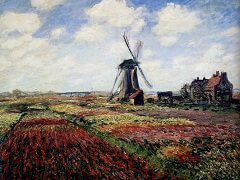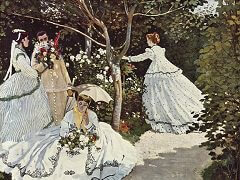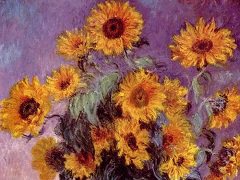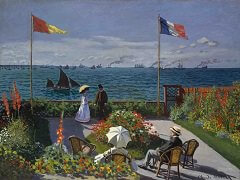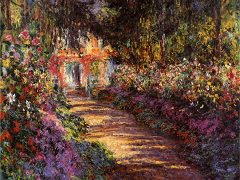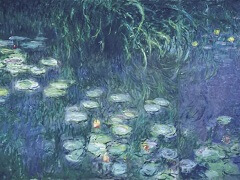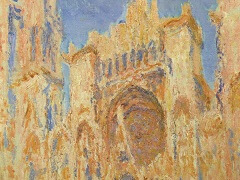Haystacks, by Claude Monet
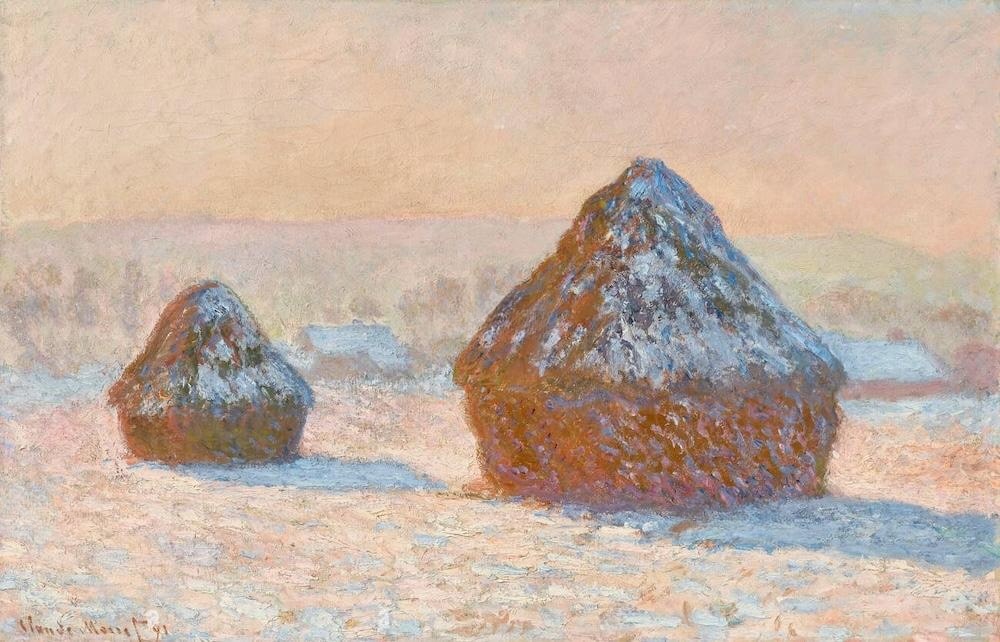
Haystacks is a title of a series of impressionist paintings by Monet. The primary subjects of all of the paintings in the series are stacks of hay in the field after the harvest
season. The title refers primarily to a twenty-five canvas series begun at the end of summer of 1890 and continued through the following spring, using that year's harvest. Some use a
broader definition of the title to refer to other paintings by Monet with this same theme. The series is known for its thematic use of repetition to show differences in perception of
light across various times of day, seasons, and types of weather. The subjects were painted in fields near Monet's home in Giverny, France.
The series is among Monet's most notable works.
Monet settled in Giverny in 1883. Most of his paintings from 1883 until his death 40 years later were of scenes within 3 kilometers (2 mi) of his home. Indeed, the haystacks themselves
were situated just outside his door. He was intensely aware of and fascinated by the visual nuances of the region's landscape and the variation in the seasons.
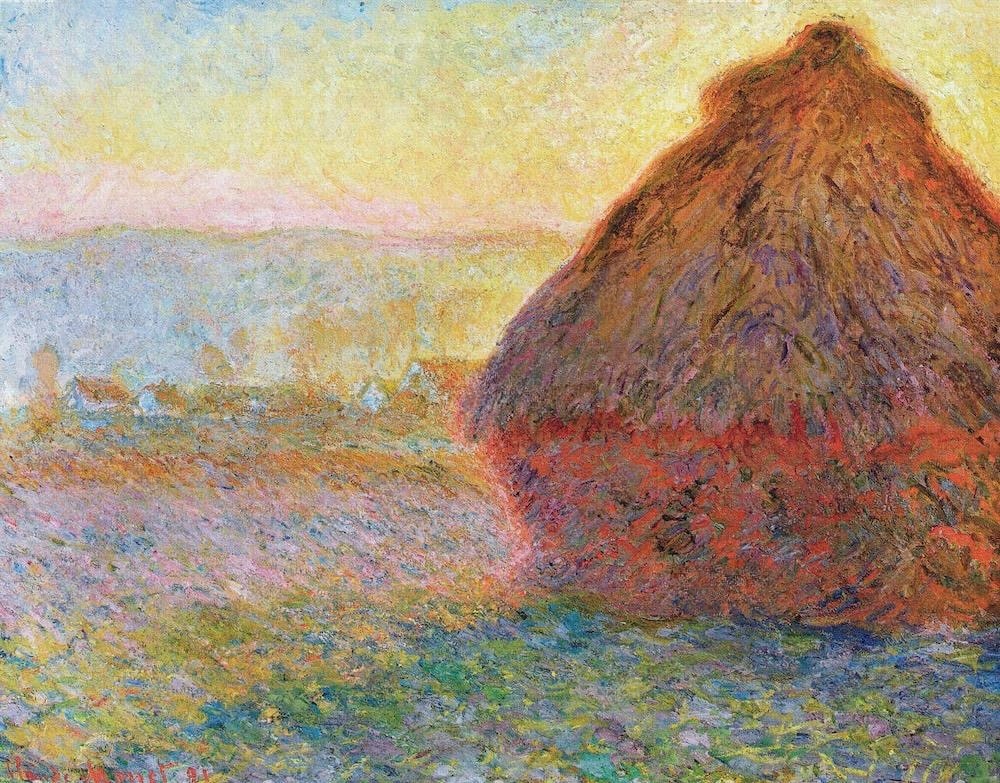
For about 18 months, between 1890 and 1891, Monet focused on the subject matter and created around 30 paintings. As he often found, the changing light during the day presented him with many obstacles in his landscapes, he wrote: "I am,., struggling with a series of different effects [haystacks]... but at this season, the sun sets so fast I can not follow it..." He admitted that he felt a great deal of work was necessary in order to succeed with the rendering he wanted. Haystacks was the first group of multiple versions of a theme that he exhibited in 1891. Fifteen depictions were shown in Paris at the Galerie Durand-Ruel. The theme was among his most celebrated. Note the delicate visualization of light in this particular piece and the fleeting effects of light and color. The haystacks are captured in winter daylight with violet and orange hues, covered in snow, with a hint of the brown of the hay underneath. It is a vibrant portrayal of a simple yet effective subject showing the artist's brilliance for capturing light.
This series is one of Monet's earliest that relied on thematic repetition to illustrate nuances in perception across natural variation such as times of day, seasons, and types of weather. Under Monet's influence, Vincent van Gogh also created his own version of Haystacks.
On MAY 15, 2019, Monet's "Meules", one of acclaimed "Haystacks" series, sold at Sotheby's sale of Impressionist & Modern Art. The auction house says it's a world auction record for the artist and the first work of Impressionist art to cross the $100-million threshold at auction.

